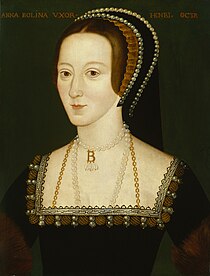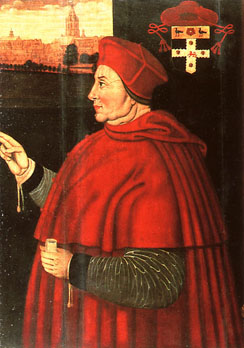The Battle of Bosworth Field: From the Point of View of Richard III
I have finally seized the crown
Through the murder of my nephews
Whom I successfully brought down
Two years after I became King
The Battle of Bosworth Field took place
It caused much pain and suffering
Houses of Lancaster and York fight for the crown
This is where all of the disputes would end
But one of these parties must be broken down
One of these royal families would be forced to descend
I was king of the York side
And Henry Tudor was the Lancastrian king
With all our disagreements we were bound to collide
I will never surrender
England is a part of me
I must do all I can to be the defender
Even if I die King I always will be
I never thought that I could be beat
I thought I had the strongest army in the land
I thought that I could crush any enemy that I meet
I was killed that day
At the Battle of Bosworth Field
In the body covered field is where I now lay
Now I have nothing more to yield
I was killed by the Lancastrian enemy
That I was trying to defeat
I will be carried on by my legacy
I will continue to influence people throughout history
And I will forever be known as King Richard III
Whether I would have been a successful King will always be a mystery
[1] Blomefield, Francis. “The City of Norwich, chapter 22.” An Essay towards a Topographical History of the County of Norfolk: volume 3: The History of the City and County of Norwich, part I. 1806. British History Online. <http://www.british-history.ac.uk/report.aspx?compid=77992&strquery=Battle%20of%20Bosworth>.
[2] Noorthouck, John. “Book 1, Chapter 7, Henry VII and Henry VIII.” A New History of London Including Westminster and Southwark. 1773. British History Online. <http://www.british-history.ac.uk/report.aspx?compid=46724&strquery=Battle%20of%20Bosworth#s2>.
[3] Walpole, Horace. “Walpole’s Historic Doubts- Part 3.” Richard III Society Online Library. <http://www.r3.org/bookcase/walpole/walpole3.html>.
[4] Richard III Society- Ballad of Bosworth, text. Bishop Percy's Folio Manuscript. Ballads and Romances, ed. J.W. Hales and F.J. Furnivall, 3 vols. (London, 1868), III, pp. 233-59. Richard III Society- American Branch. <http://www.r3.org/bosworth/ballad2.html>.
[5] More, Sir Thomas. “The History of King Richard the Third.” 1513. Richard III Society- American Branch. <http://www.r3.org/bookcase/more/moretext.html>.
[6] Richard III Society- Ballad of Bosworth, text. Bishop Percy's Folio Manuscript. Ballads and Romances, ed. J.W. Hales and F.J. Furnivall, 3 vols. (London, 1868), III, pp. 233-59. Richard III Society- American Branch. <http://www.r3.org/bosworth/ballad2.html>.
The Battle of Bosworth Field: From the Point of View of Henry Tudor
I, Henry Tudor, should have the crown
I am the right-wise King
Edward needs to be taken down
Victory is what I shall bring
In the Battle of Bosworth Field
I will always prevail
With my deadly sword I shall wield
King Richard III I will assail[1]
The houses of Lancaster and York will meet
And our differences will finally end
But the Yorkists will be the ones we defeat
For the crown I will fight and defend[2]
I am the leader of the Lancastrian side
And for the Yorkists Richard is king
As the leader only one house can reside
For only one house will the bells of victory ring[3]
I entered England by way of Wales
And I found Richard in the field
I knew he must be killed if all else fails
All I needed was my army with the swords they wield
Richard III was killed that day
My loyal army was victorious
In the field was where he lay
Slain by someone’s sword so glorious[4]
I have finally won the crown
The throne of England is mine
Richard III has been brought down
Now my power can finally shine
Princess Elizabeth I will marry
In order for the two houses to be united
Now the Tudor bloodline shall carry
For the future that is farsighted
A new age for England shall begin
Things will be different from here on out
England will be the best it has ever been
I know this without a doubt[5]
[1] Richard III Society- Ballad of Bosworth, text. Bishop Percy's Folio Manuscript. Ballads and Romances, ed. J.W. Hales and F.J. Furnivall, 3 vols. (London, 1868), III, pp. 233-59.Richard III Society- American Branch. <http://www.r3.org/bosworth/ballad2.html>.
[2] Noorthouck, John. “Book 1, Chapter 7, Henry VII and Henry VIII.” A New History of London Including Westminster and Southwark. 1773. British History Online. <http://www.british-history.ac.uk/report.aspx?compid=46724&strquery=Battle%20of%20Bosworth#s2>.
[3] “The Croyland Chronicle: Part IX.” The Third Continuation of the of the History of Croyland Abbey: July, 1485- April, 1486 with Notes. Richard III Society Online Library of Primary Texts and Secondary Sources. Richard III Society- American Branch. <http://www.r3.org/bookcase/croyland/croy9.html>.
[4] “A Castilian Report.” 1486. Richard III Society- Bosworth Sources, Foreign. Richard III Society- American Branch. <http://www.r3.org/bosworth/chron3.html>.
[5] Noorthouck, John. “Book 1, Chapter 7, Henry VII and Henry VIII.” A New History of London Including Westminster and Southwark. 1773. British History Online. <http://www.british-history.ac.uk/report.aspx?compid=46724&strquery=Battle%20of%20Bosworth#s2>.


